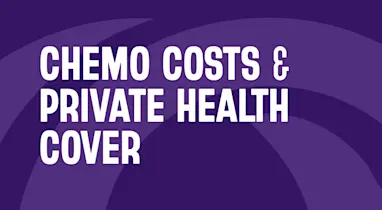less than
2 mins
Private Health Cover for Adenoid & Tonsil Removal
Did you know that over 42,000** kids need to have their tonsils removed every year?
Fortunately, a bit of planning and the right insurance can drastically reduce the cost of a tonsillectomy.
Below, we'll outline everything you need to know to determine whether removing your tonsils and/or adenoids is the right move for you and how to keep your out-of-pocket expenses to a minimum.
Key Points
Tonsil and adenoid removal surgery is a quick and straightforward procedure that can eliminate the pain and discomfort of infected glands.
Medicare covers the surgery if carried out in a public hospital, though the waiting list could be quite long.
With the right private health insurance, you could receive the surgery much sooner in a private hospital without worrying about excessive gap fees.
What are adenoids?
Adenoids are the small glands found just behind your nose, above the roof of your mouth. They play a vital role as part of your immune system, helping your body combat infection.
What are tonsils?
Tonsils are a pair of glands that are found at the back of your throat. Like adenoids, they're there to protect us, often serving as our first line of defence against bacteria and viruses. How bad do your tonsils have to be to get them removed? Since they’re exposed to so many harmful bacteria, tonsils are prone to infection.
This is known as tonsillitis and causes a range of symptoms from bad breath to nausea, fever, and ear infections. Worse, it can cause painful swelling, which can affect your quality of life.
If infected tonsils are causing you to be sick and sore, your doctor may recommend having them removed.
Learn more about health insurance with these guides
What does the operation for adenoid or tonsil removal involve?
Adenoid and tonsil removal is an hour-long procedure for which you'll be placed under general anaesthetic.
Your surgeon accesses your tonsils and adenoids through the back of your throat and cuts away at the tissue until they're completely removed.
There won't be any incisions or post-surgery scars and, because it's a simple procedure, you'll likely be able to go home the same day.
What are the side effects of adenoid removal?
Adenoid removal surgery is perfectly safe, though some temporary side effects can include sore ears and a sore throat, trouble swallowing, and fever - all or any of which may occur for a day or two afterwards.
How much does it cost to get your tonsils out?
The average cost to get your tonsils out can be around $3,200* to $4,500^. You'll rarely have to pay that amount out of your own pocket, especially if you have a bronze (or higher) level of private health insurance.
Is tonsil removal covered by Medicare?
Medicare covers around 75% of the Medicare Benefit Schedule fee for tonsillectomy removals carried out when you’re a private patient in a private or public hospital.
Treatment as a public (Medicare) patient in a public hospital is free. While that can save you thousands, it also means you'll have to put up with a really long waiting time. This can be debilitating if your tonsils are causing major pain or illness.
Your alternative is to go private, which means that you’ll have a much shorter waiting time but will only have part of your costs covered by Medicare.
How long do you have to wait under the public healthcare system?
According to the Australian Institute of Health and Welfare, the average wait time for elective surgeries is 39 days`. For tonsillectomies, the wait can be over 100 days.^^
How does private health insurance cover tonsil and adenoid removal?
Even Bronze Tier hospital insurance usually covers tonsil and adenoid removal, albeit sometimes with an excess. As a private patient, you’re also able to choose your own surgeon.
If your existing policy doesn't provide the cover you need for your surgery, try our simple, easy-to-use insurance comparison tool to help you find a plan# that covers what you need.
How long are waiting periods?
As is standard with most health issues, your insurance will have a 12-month waiting period for pre-existing conditions and a two-month waiting period for new ones which develop after you take out your policy.
Are there any gap fees involved for tonsil removal?
The average gap fee for tonsil removals tend to be between $330 and $550*. This covers charges for things such as your anaesthetist, your ENT surgeon’s fees, and any tests that are done.
Some insurance policies may cover all of these things and, as such, some 26% of people don’t pay any out-of-pocket expenses for this type of surgery*.
Where can I get health insurance for tonsil removal?
Public and private hospital charges for tonsils and adenoids fall under the Bronze Tier of hospital cover, but funds are given some discretion as to how much of the procedure they cover. This could mean your current fund doesn’t offer all the cover you need for your tonsil and adenoid removal. In this case, it’s worth shopping around to find one that does and features extras. At Compare Club, our experts help you find a cover# to suit your needs. Talk to our experts today, or use our quick and easy online comparison tool now.
COMPARE & SAVEWhat's new in health insurance - Jun 2025
Biggest hike in years: Health insurance premiums rose by 3.73% on April 1 — the largest hike since 2018 and noticeably higher than last year’s increase of 3.03% (in 2024).
Most Aussies face higher hikes: Compare Club’s data suggests that due to the five largest funds holding nearly 80% of the market, the average increase for the majority of policyholders is closer to 4.25%.
Review your policy: Now’s the time to check if your policy still fits—better deals could be available.
**Throat surgery for young children *Medical Costs Finder ^Cost Calculator `Elective surgery ^^Preparing for tonsil surgery #Compare Club compares selected products from a panel of trusted insurers. We do not compare all products in the market.
Things You Should Know
*As our customer you'll be provided with quotes directly from the insurer for the product you intend to purchase. We manage the application and deal with the administration work and insurer. We do not charge you a fee for the service we provide, the insurer simply remunerates us in return for setting up your policy. The financial and insurance products compared on this website do not necessarily compare all features that may be relevant to you. Comparisons are made on the basis of price only and different products may have different features and different levels of coverage. Compare Club does not compare all policies available in Australia and our partner insurers may not make all policies available to Compare Club.
This guide is opinion only and should not be taken as medical or financial advice. Check with a financial/medical professional before making any decisions.
Chris Stanley is the sales & operations manager of health insurance at Compare Club. With extensive experience and expertise, Chris is a trusted leader known for his deep understanding of health insurance markets, policies, and coverage options. As the sales & operations manager of health insurance, Chris leads a team of dedicated professionals committed to helping individuals and families make informed decisions about their health insurance needs.

Meet our health insurance expert, Chris Stanley
Chris's top health insurance tips:
- 1
Australia’s public health system is world-class, but wait times for public hospitals can be long, inconvenient - and leave you living in constant pain while you wait.
- 2
An appropriate private health insurance policy can speed up your surgery, relieving your pain sooner.
- 3
Family health cover means your children are covered under the same policy as you.
- 4
Many health insurance policies come with a 12-month waiting period for pregnancy-related cover, so it’s a good idea to get a family policy organized well before starting your family. This means your child will be covered from birth until at least their early twenties (depending on which health fund you select).




